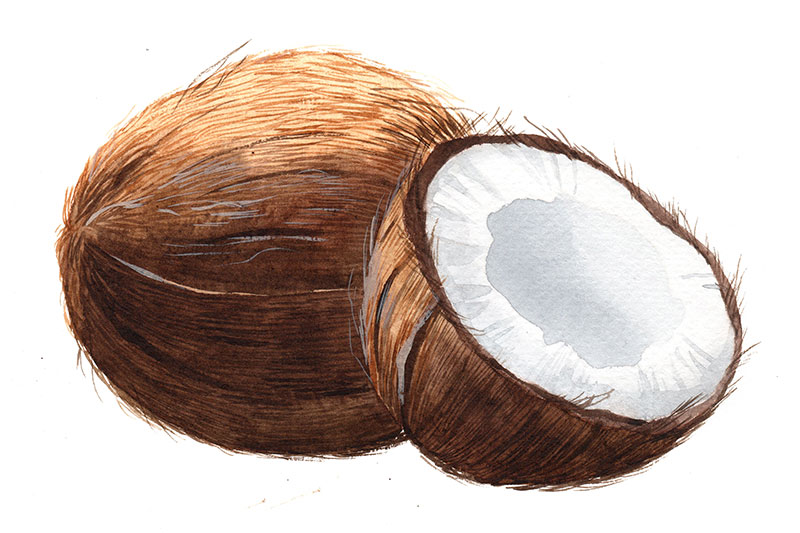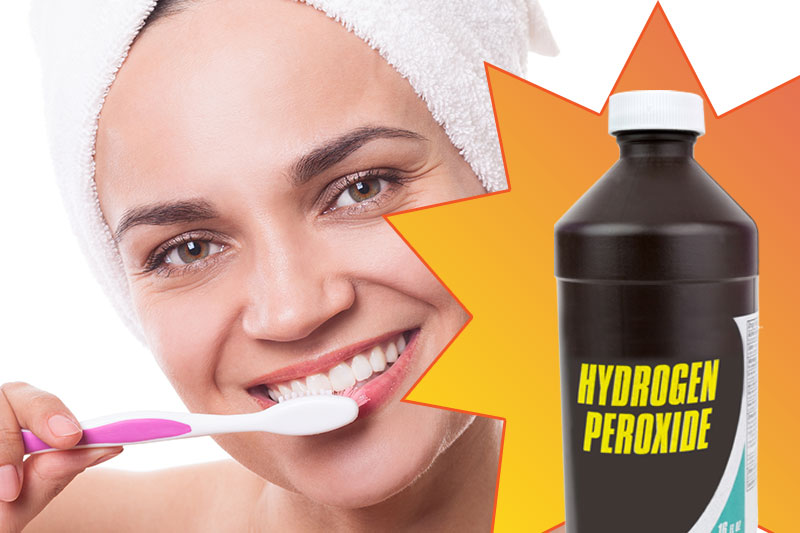You can whiten your teeth naturally at home using grocery store products. However, the science behind these methods needs to be improved. According to one survey, Americans spent over $1.4 billion on at-home whitening products in 2016. If you want to whiten your teeth, you have many options.
It is important to note that most whitening products use chemicals to bleach your teeth, which could pose a health risk to some people. In this article, we list many natural and safe options for whiter teeth without the use of chemicals.
Why Do Your Teeth Look Yellow?
Several factors can lead to dull, dingy teeth that lack the bright, white shine they once had.
The enamel on your teeth, which is the outermost layer, can be stained by certain foods. Yellow teeth are also caused by plaque buildup. A regular cleaning regimen and whitening remedies can usually resolve this discoloration.
Occasionally, teeth appear yellow because the enamel has eroded, revealing the dentin beneath. Under the enamel lies a yellow, bony tissue called dentin. Let’s now talk about how to whiten your teeth naturally at home.
Oil Pulling

Originally from India, oil pulling improves oral hygiene and removes toxins from the body. This practice involves swishing oil around in your mouth to remove bacteria that cause plaque and yellow teeth. Despite its pleasant taste and many health benefits, coconut oil is popular.
Coconut oil also contains lauric acid, which reduces inflammation and kills bacteria.
Oil pulling has been shown to reduce plaque, gingivitis, and bacteria in the mouth.
Plaque and gingivitis are caused by streptococcus mutans, a type of bacteria. The daily swishing of coconut oil is as effective as antimicrobial mouthwash at reducing Streptococcus mutans after two weeks.
Oil pulling has not been proven to whiten teeth in scientific studies. However, it’s a safe practice that’s worth trying. Regular oil pulling has been reported to whiten and brighten teeth for many people.
Oil pulling involves putting one tablespoon (15 ml) of coconut oil in your mouth and pushing and pulling it through your teeth. At room temperature, coconut oil is solid, so you may have to wait a few seconds for it to melt. Then, for 15 to 20 minutes, continue oil pulling.
Spitting coconut oil into a toilet or trash can is essential, as it could return to a solid form and clog your drain pipes. Also, with coconut oil pulling, the enamel on your teeth is not eroded by acids or other ingredients as with many other tooth whitening methods. Therefore, it can be done every day.
Brush Your Teeth With Baking Soda

Commercial toothpaste often contains baking soda because of its natural whitening properties.
Surface stains on teeth can be removed with this mild abrasive. Furthermore, baking soda prevents bacteria from growing in your mouth by creating an alkaline environment. It will not whiten your teeth overnight, but you should notice a difference in their appearance over time.
There is no scientific evidence that brushing with plain baking soda will whiten your teeth, but several studies indicate that toothpaste can improve dental health and may whiten teeth.
Toothpaste containing baking soda significantly reduced plaque, gum inflammation, and bleeding, compared to regular toothpaste without baking soda. According to another review, toothpaste containing baking soda may be more effective at removing stains and whitening teeth. Brush your teeth with a paste from one teaspoon (six grams) of baking soda and two teaspoons of water. Several times a week, you can do this.
Hydrogen Peroxide

You can use hydrogen peroxide to bleach your teeth and kill bacteria in your mouth. Hydrogen peroxide’s ability to kill bacteria has made it popular for years as a wound disinfectant.
Commercial whitening products often contain hydrogen peroxide at higher concentrations than at home. Hydrogen peroxide alone has not been studied, but commercial toothpaste containing peroxide has been analyzed in several studies. An experiment found that toothpaste containing a higher amount of hydrogen peroxide whitened teeth more effectively than toothpaste containing a lower concentration.
Researchers found that hydrogen peroxide toothpaste reduced tooth discoloration caused by coffee more effectively than toothpaste containing charcoal and abrasives.
Hydrogen peroxide, however, raises some safety concerns. Strong or overuse can irritate gums and tooth sensitivity, even at diluted concentrations. A high dose may also cause cancer, but no evidence has supported this.
Using hydrogen peroxide as a mouthwash before brushing your teeth is one way to use it. To avoid side effects, use a solution of 1.5% or 3%.
Hydrogen peroxide is typically sold at drugstores in 3% concentrations. Mix equal parts of peroxide and water to dilute this concentration to 1.5%.
Fruits And Vegetable Help
Your teeth and body may benefit from a diet high in fruits and vegetables. Bruising plaque off with crunchy, raw fruits and vegetables is not a replacement for brushing. Several fruits are claimed to whiten your teeth, including strawberries and pineapple.
Celebrities have made whitening teeth with strawberries and baking soda a popular natural remedy. Strawberry malic acid removes discoloration from your teeth while baking soda buffs away stains. However, it is essential to note that this remedy has yet to be thoroughly tested by science.
While strawberries may help exfoliate your teeth and make them appear whiter, they are unlikely to penetrate the stains on your teeth. Teeth can be whitened by pineapple, according to some claims. The gel made with bromelain, an enzyme found in pineapples, is more effective than a control group at removing tooth stains. Pineapples, on the other hand, do not produce the same effect.
Be Mindful Of Staining Foods And Drinks
It is well known that coffee, red wine, soda, and dark berries stain teeth. You should limit the amount of time these substances are in contact with your teeth, but you should not altogether avoid them. To prevent direct contact with your teeth, sip beverages known to stain teeth through a straw if possible.
You should also brush your teeth roughly 60 minutes after consuming any of these foods or beverages to prevent the color of your teeth from being affected. Smoking and chewing tobacco can also discolor teeth.
Be Mindful Of Sugar
Reduce your sugar intake to whiten your teeth. Plaque and gingivitis are caused by Streptococcus mutans, which grow in sugar-rich diets. So make sure you brush your teeth after consuming sugary food.
Increase Calcium Intake
The enamel of some teeth erodes, exposing yellow dentin underneath. To keep your teeth pearly white, you should do whatever you can to strengthen their enamel.
Your teeth may be protected from enamel erosion by calcium-rich foods, such as milk, cheese, and broccoli.
Brush And Floss Regularly
It results from plaque buildup that causes tooth discoloration, which occurs naturally as we age. Flossing and brushing regularly can reduce plaque buildup and keep your teeth white. Your teeth are gently cleaned with toothpaste, and plaque is removed with flossing. Regular dental cleaning can also keep your teeth white and clean.


